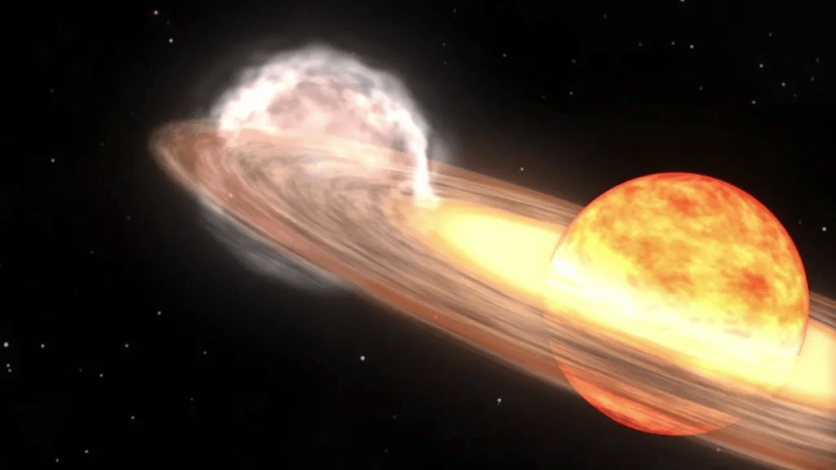NASA and astronomers worldwide are eagerly awaiting a rare celestial event this summer as a nova explosion in the constellation Corona Borealis is expected to be visible from Earth.
This event, which involves the "Blaze Star" or T Coronae Borealis (T CrB), has captured the attention of both professional and amateur stargazers.

NASA, Astronomers Worldwide Waiting on Rare Nova Explosion
According to NASA, T Coronae Borealis is a binary star system situated approximately 3,000 light-years away from Earth in the constellation Corona Borealis, also known as the Northern Crown.
This system features a white dwarf, an Earth-sized stellar remnant with a mass similar to that of the sun, and a red giant star. The white dwarf siphons hydrogen from the red giant, causing an accumulation of pressure and heat on its surface. This buildup eventually triggers a thermonuclear explosion, leading to a nova.
Unlike a supernova, which obliterates the star, a nova expels only the accumulated material, leaving the white dwarf intact and capable of repeating the cycle, according to Dr. Rebekah Hounsell, an assistant research scientist in NASA.
The earliest recorded nova event of T CrB was in 1217, when Burchard of Ursberg, a German abbot, observed a dim star suddenly shining brightly. The most recent recorded eruption occurred in 1946.
Based on historical patterns and recent observations that mirror those before the 1946 event, scientists anticipate the next explosion might happen by September 2024.
Hounsell believed this event would spark a renewed interest in astronomy, particularly among young enthusiasts. She hoped it would motivate them to delve deeper into the cosmos and contribute to scientific research.
Dr. Elizabeth Hays, the head of NASA Goddard's Astroparticle Physics Laboratory, was also excited. Hays is particularly enthusiastic about the collaboration between citizen scientists and NASA in observing the predicted explosion of T CrB.
She emphasized the critical role of amateur astronomers in spotting and tracking celestial events. She said their contributions, often disseminated through social media and instant alerts, are invaluable to the professional scientific community.
Space Telescopes Set to Capture the Nova Explosion
NASA's Fermi Gamma-ray Space Telescope, along with other space-based missions like the James Webb Space Telescope and the Neil Gehrels Swift Observatory, will be engaged in monitoring the nova event.
Ground-based instruments such as the National Radio Astronomy Observatory's Very Large Array in New Mexico will also participate. This coordinated approach aims to gather data across the entire light spectrum, from visible to non-visible wavelengths, providing a comprehensive understanding of the nova's dynamics.
The upcoming nova event is a rare observational opportunity to advance the understanding of stellar processes. Gamma-ray imagers and X-ray polarization capabilities were unavailable during the last eruption in 1946.
Now, astronomers can use these technologies to provide new data and insights. While there is no guarantee that T CrB will erupt as predicted, the possibility has excited both seasoned and aspiring astronomers.
"This one will be really close, with a lot of eyes on it, studying the various wavelengths and hopefully giving us data to start unlocking the structure and specific processes involved. We can't wait to get the full picture of what's going on," Hays said in an official statement.
Related Article : NASA Magellan Discovers Ongoing Volcanic Activity in Venus

![Apple Watch Series 10 [GPS 42mm]](https://d.techtimes.com/en/full/453899/apple-watch-series-10-gps-42mm.jpg?w=184&h=103&f=9fb3c2ea2db928c663d1d2eadbcb3e52)



